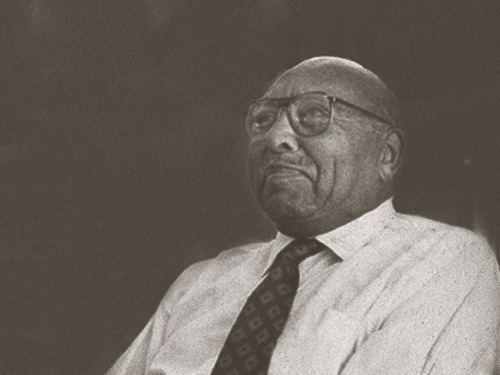Name Walter Hawkins | ||
 | ||
Awards National Medal of Technology and Innovation | ||
Walter Lincoln Hawkins (March 21, 1911 – August 20, 1992) was an African-American scientist and inventor who, while working at Bell Laboratories in the 1940s, made universal service possible. Hawkins developed a plastic to cover telephone wires ; a new material that was lightweight,and less expensive than the lead sheathing used at that time. He is a recipient of the National Medal of Technology and an inductee of the National Inventors Hall of Fame.
Contents

Early years

Hawkins was born on March 21, 1911, in Washington, D.C. His father was a lawyer for the U.S. Census Bureau and his mother was a science teacher in the District of Columbia school system.

When he was young, Hawkins was fascinated with how things worked. For example, it was not unusual for him to take apart one toy and reassemble it to make another one. He also made spring-driven toy boats to sail in the reflecting pool in front of the Lincoln Memorial. Hawkins and a fellow eleven-year-old once tried to build a perpetual motion machine, not realizing that it was an impossible task. He built a working radio so he could listen to Washington Senators baseball games.
While at Washington's Dunbar High School, Hawkins noticed that his physics teacher drove an expensive new car every year. The teacher, who had invented a self-starter mechanism to replace automobile hand cranks, received a new car each year as partial payment from the company which had bought the mechanism. Hawkins was tremendously excited to discover that a person could make a living through mechanical tinkering.
After graduating from high school he went to Rensselaer Polytechnic Institute in Troy, New York. In 1932 he graduated with a chemical engineering degree. Unable to find a job during the Great Depression, he enrolled in graduate school at Howard University,where in 1934, he earned a master's degree in chemistry. Professor Howard Blatt, Hawkins’ friend and mentor at Howard, informed him of a special scholarship at McGill University in Montreal, Canada. Hawkins enrolled at McGill, earned his Doctorate in Chemistry in 1939, and left to continue his research at Columbia University when he received a fellowship from the National Research Council.
Bell Laboratories
In 1942, Hawkins became the first African-American to join the technical staff of Bell Laboratories. By controlling much of the Pacific theater in World War II, the Japanese had cut off much of America's rubber supply from Southeast Asia. Hawkins contributed to the development of a rubber substitute made from petroleum stock.
After the war, Hawkins began work on an important project, a new and improved insulation for telephone cables. Underground and underwater cables, which were laid over incredibly long distances, were covered with fiber wrapped in heavy, expensive lead sheathing. Scientists had known that new, lightweight plastics would be a good alternative, but common plastics did not last long outdoors. Hawkins and Vincent Lanza in 1956 invented a plastic coating that could withstand extreme fluctuations in temperature, last up to seventy years, and was less expensive than lead. Telephone lines were subsequently installed in rural areas, bringing affordable phone service to thousands of people.
Hawkins, who worked at Bell Labs for thirty-four years, became assistant director of their chemical research lab in 1974. His work with polymers, primarily plastics, focused on the development of new products and recycling. The extremely durable nature of plastic becomes a huge problem when it must be discarded. Hawkins became an expert, not only in making plastics last longer, but in recycling these seemingly indestructible products.
Later years
Upon his retirement from Bell Labs in 1976, Hawkins began teaching and encouraging college students to study science and engineering. In 1981, he became the first chairman of Project SEED (Support of the Educationally & Economically Disadvantaged), an American Chemical Society program designed to promote science careers for minority students. He also helped to set up a program at Bell Labs and AT&T to recruit African-American scientists and engineers.
On August 20, 1992 Walter Lincoln Hawkins died in San Marcos, California.
Legacy
Hawkins was frequently honored as a polymer chemistry pioneer. The first African-American to become a member of the National Academy of Engineering, Hawkins also won the International Medal of the Society of Plastics. In 1992 White House ceremony, he received the [[National Medal of
Technology]] from President George H. W. Bush.